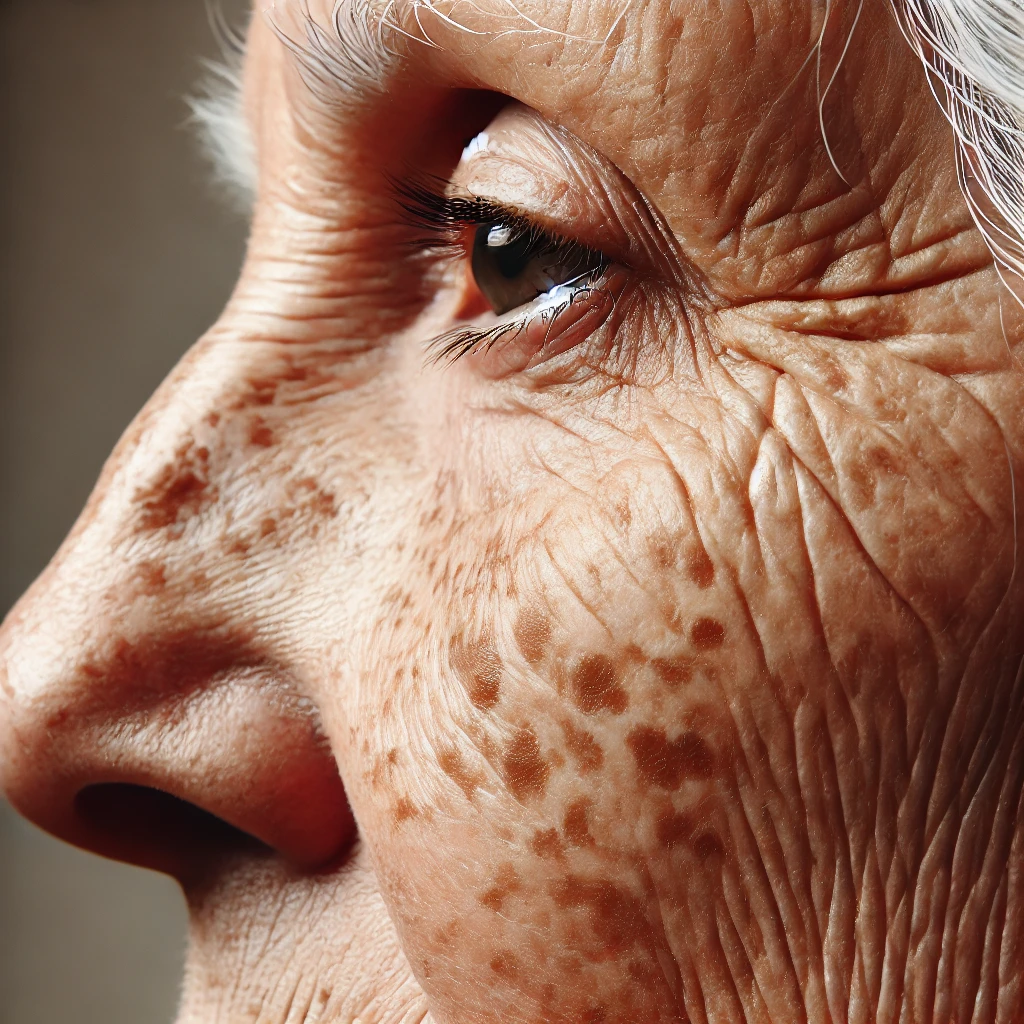
Age spots and skin tags are common skin concerns that often appear with aging. While they are generally harmless, many people seek ways to prevent or remove them for cosmetic reasons. This guide will explore their causes, prevention strategies, and treatment options.
What Are Age Spots?
Age spots, also known as liver spots or sun spots, are flat, brown, gray, or black spots that appear on areas of the skin frequently exposed to the sun, such as the face, hands, shoulders, and arms.
Causes of Age Spots
Sun exposure: Ultraviolet (UV) radiation increases melanin production, leading to dark spots.
Aging: The skin’s natural ability to regenerate slows with age, making pigmentation more pronounced.
Genetics: Some individuals are genetically predisposed to developing age spots.
Prevention of Age Spots
Daily sunscreen use: Apply broad-spectrum SPF 30+ sunscreen to protect the skin from UV damage.
Protective clothing: Wear hats, sunglasses, and long sleeves when exposed to the sun.
Antioxidant skincare: Use products containing Vitamin C and E to fight free radical damage and reduce pigmentation.
Regular exfoliation: Encourages cell turnover and helps fade dark spots.
Treatment & Removal of Age Spots
Topical creams: Ingredients like hydroquinone, retinoids, and Vitamin C can help lighten pigmentation.
Chemical peels: Removes the top skin layer, promoting even-toned skin.
Laser therapy: Targets melanin to break down pigmentation and even out skin tone.
Cryotherapy: Freezes the spots, causing them to peel off over time.
What Are Skin Tags?
Skin tags are small, soft, flesh-colored growths that typically develop in skin folds, such as the neck, armpits, eyelids, and under the breasts. They are benign and noncancerous but can be a cosmetic concern.
Causes of Skin Tags
Friction: Develops in areas where skin rubs against skin or clothing.
Hormonal changes: Common during pregnancy due to increased hormone levels.
Genetics: Some individuals are naturally predisposed to skin tags.
Obesity & diabetes: Higher occurrence in people with metabolic conditions.
Prevention of Skin Tags
Reduce friction: Keep skin dry and avoid tight clothing that causes rubbing.
Maintain a healthy weight: Reducing skin folds can minimize tag development.
Proper skincare routine: Moisturize and cleanse areas prone to friction regularly.
Treatment & Removal of Skin Tags
Cryotherapy: Freezing off the tag using liquid nitrogen.
Electrocautery: Burning the tag off with electrical current.
Ligation: Cutting off blood supply to the tag using a small surgical thread.
Surgical removal: A dermatologist can safely remove them with minor excision.
When to See a Doctor
If an age spot changes in size, shape, or color, it’s essential to consult a dermatologist to rule out skin cancer.
If a skin tag becomes painful, irritated, or bleeds frequently, professional removal may be necessary.
By understanding the causes and prevention strategies for age spots and skin tags, you can take proactive steps toward healthier, clearer skin. Whether through protective skincare routines or professional treatments, effective solutions are available to help you maintain an even skin tone and smooth complexion.
